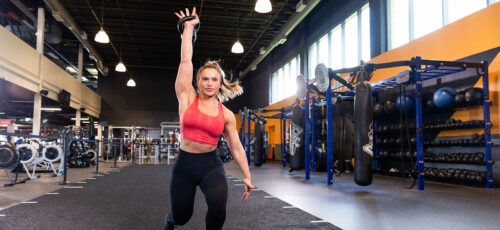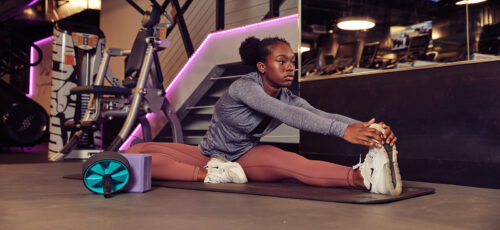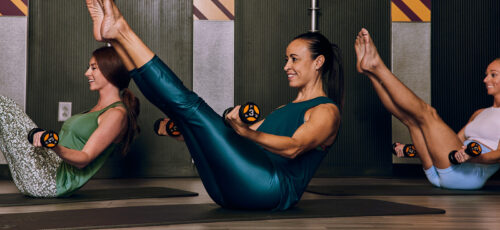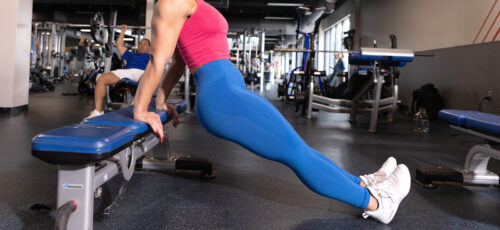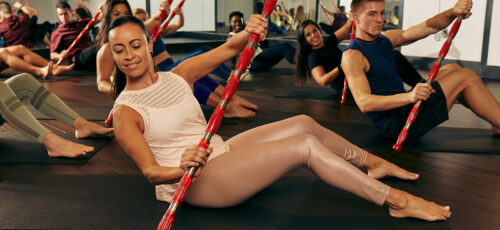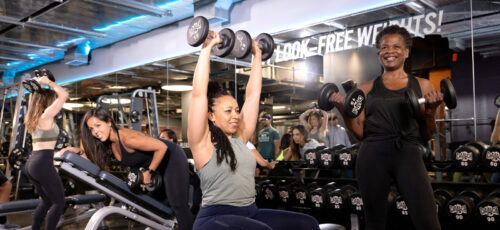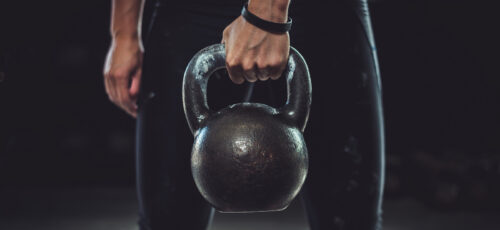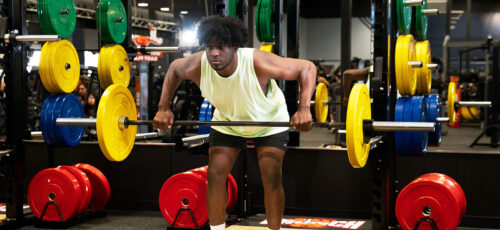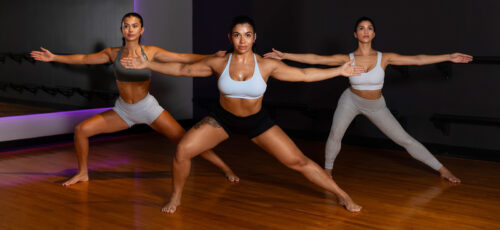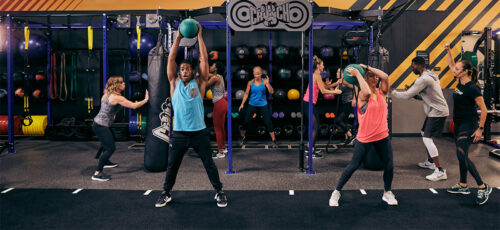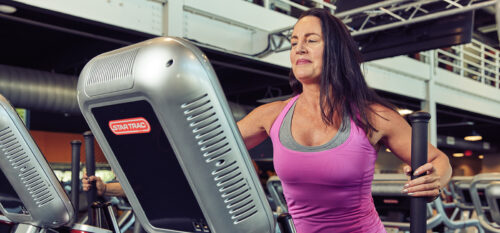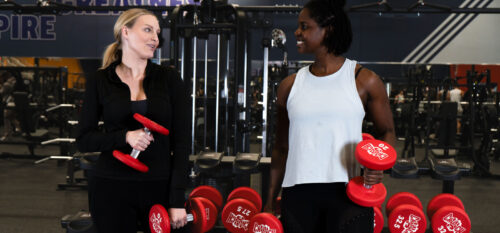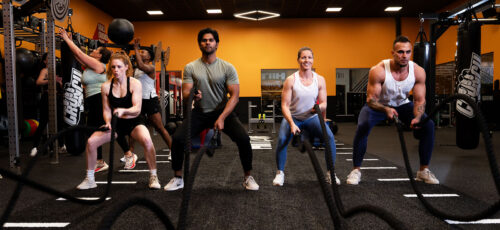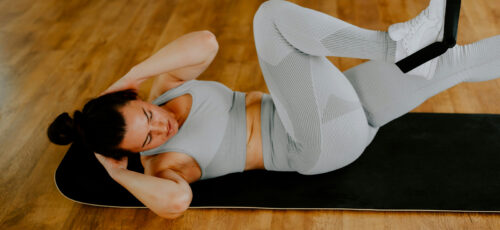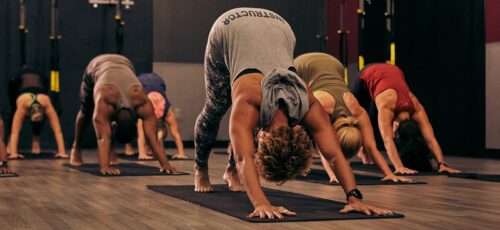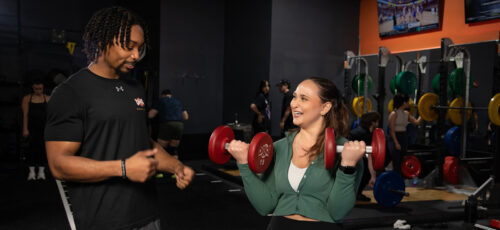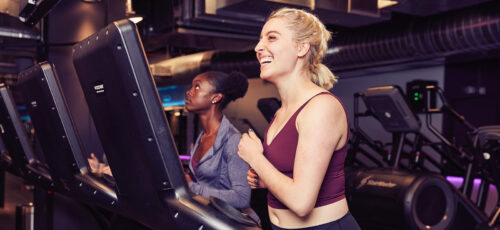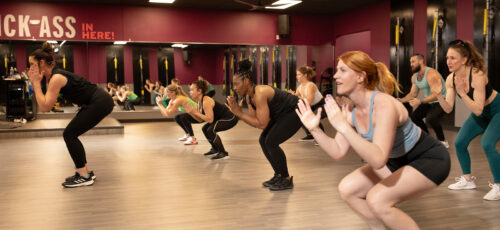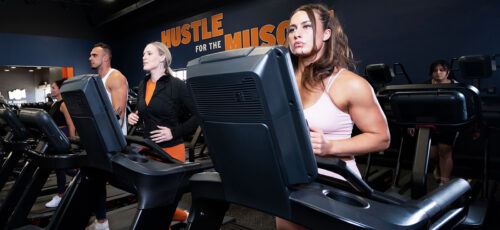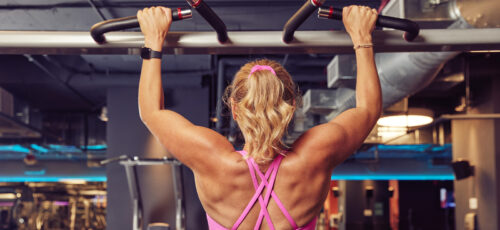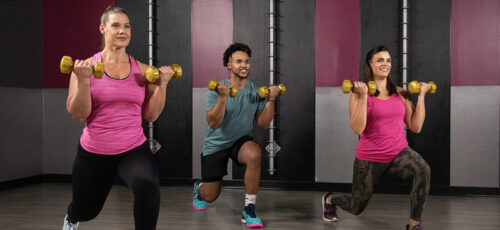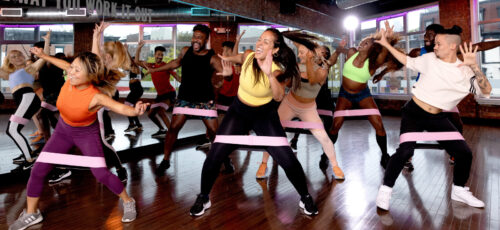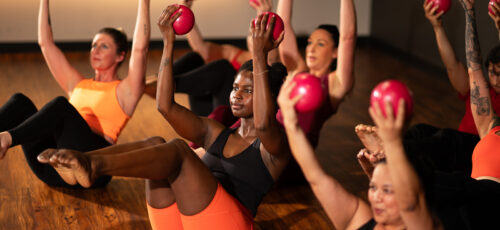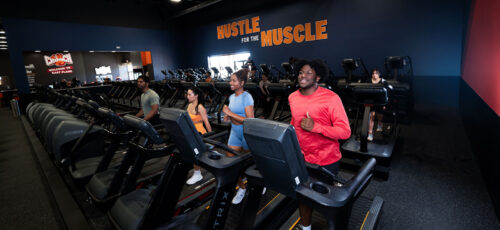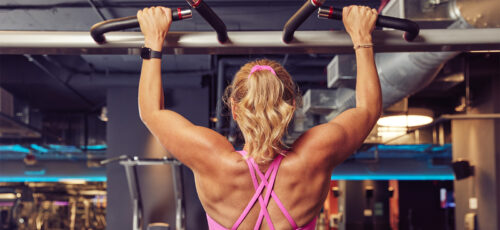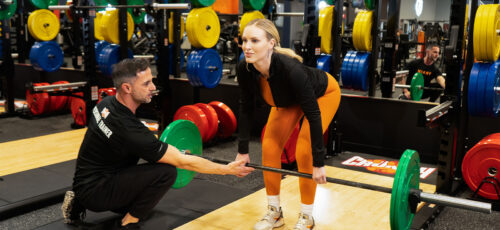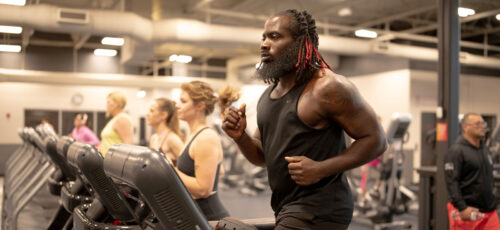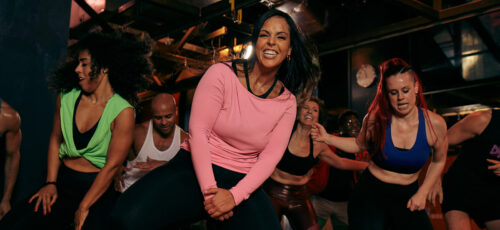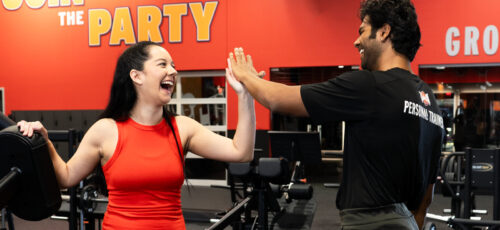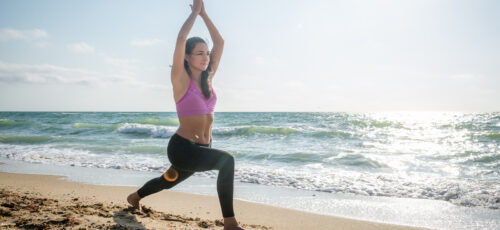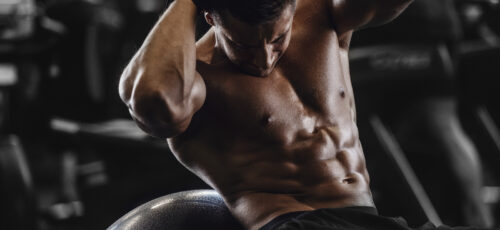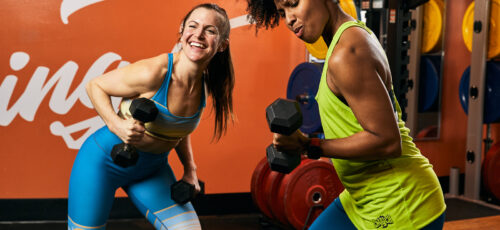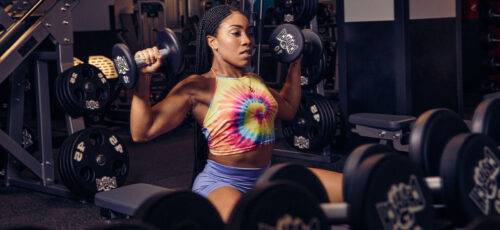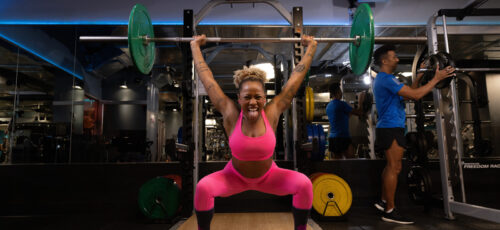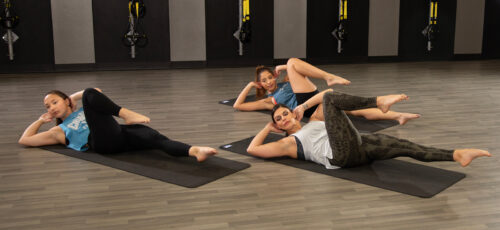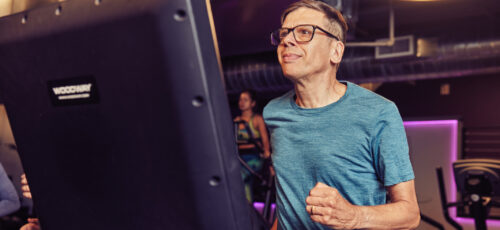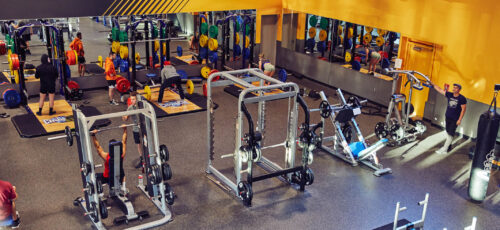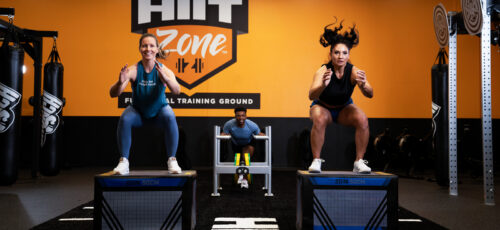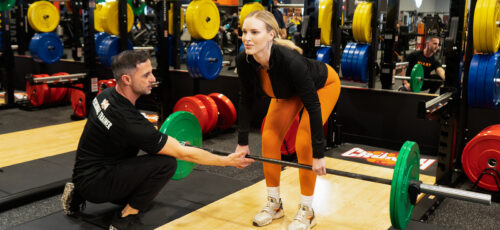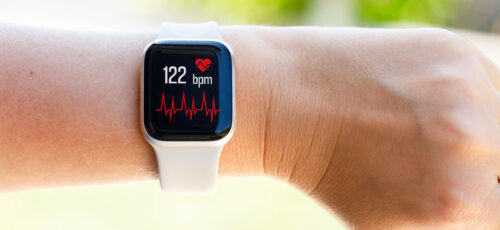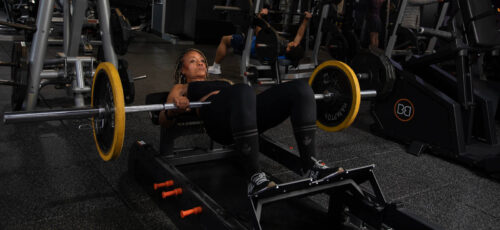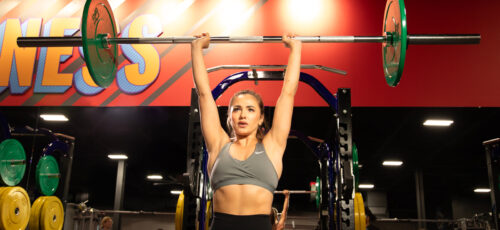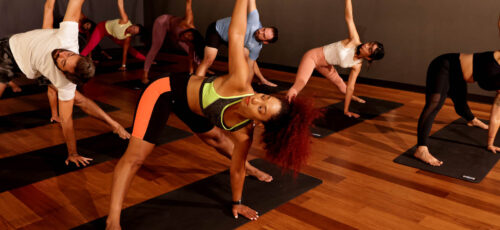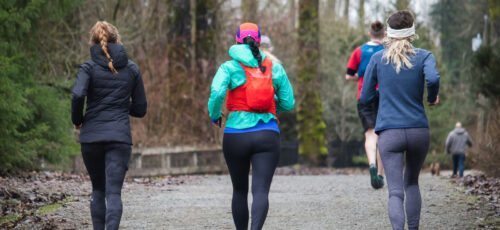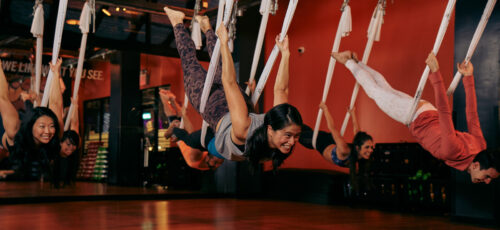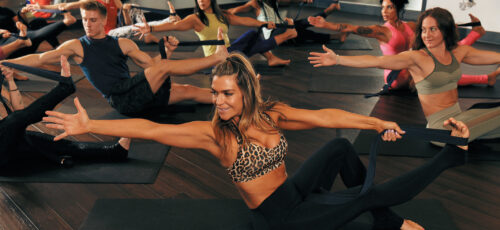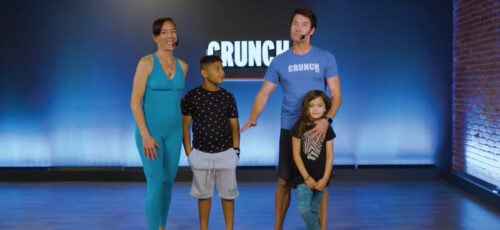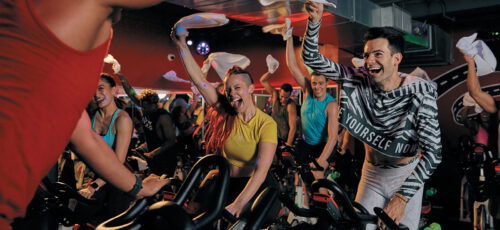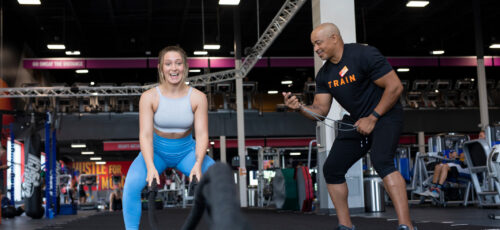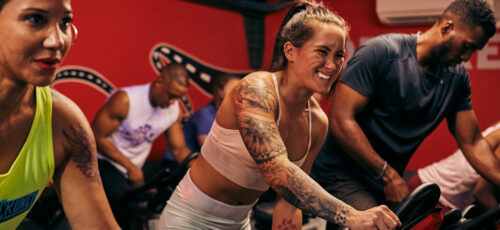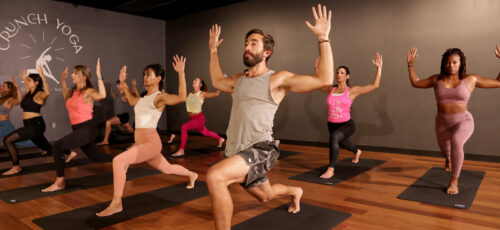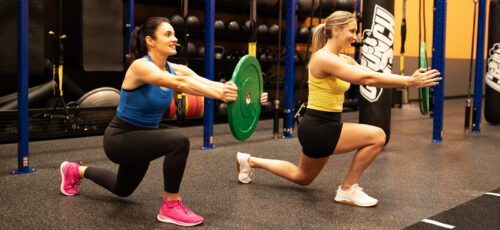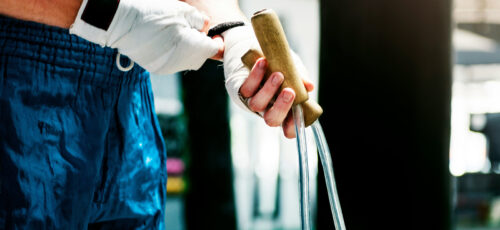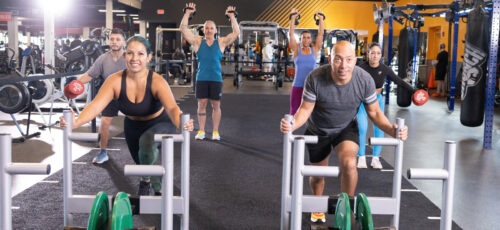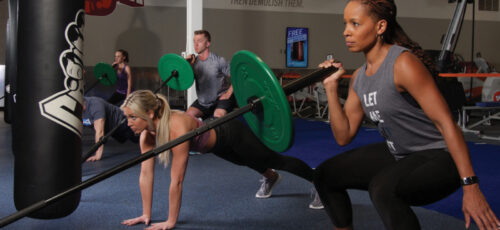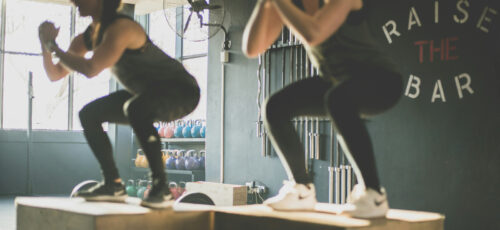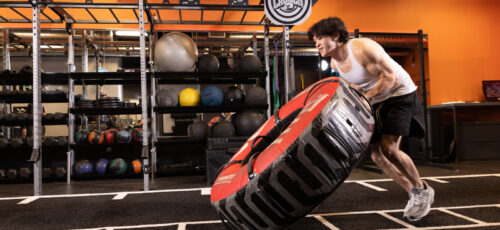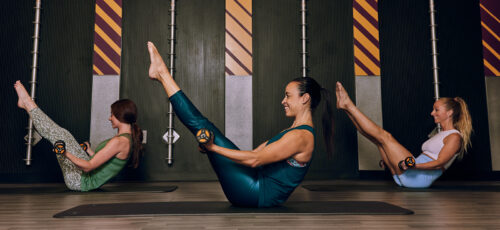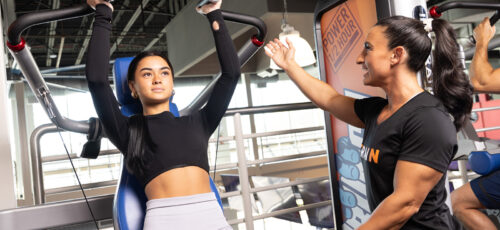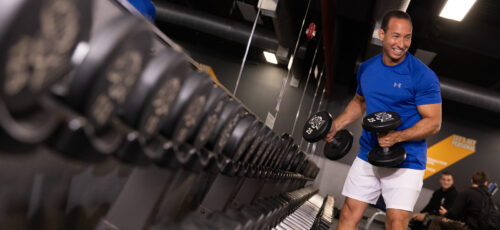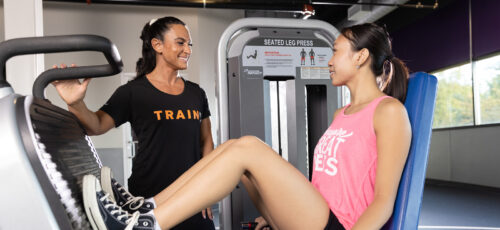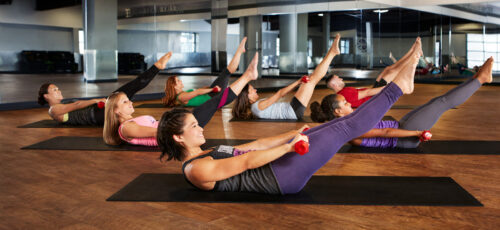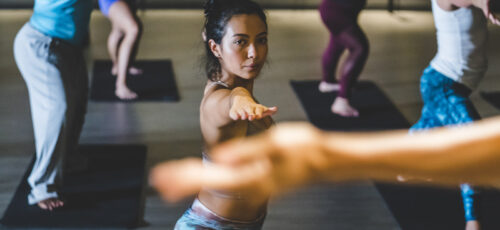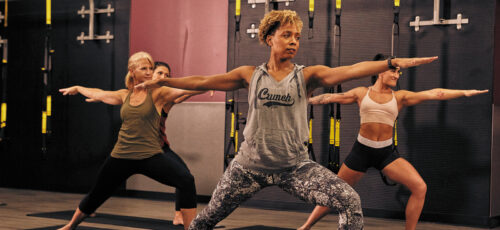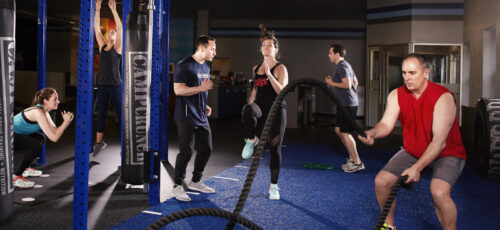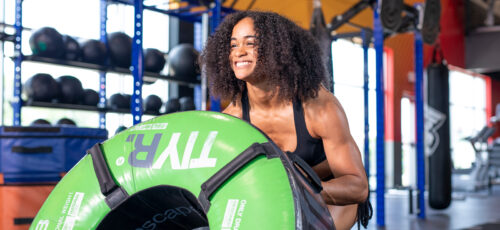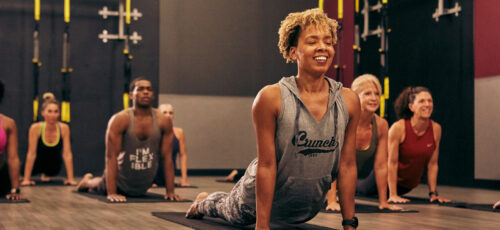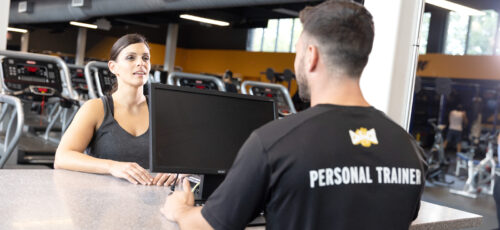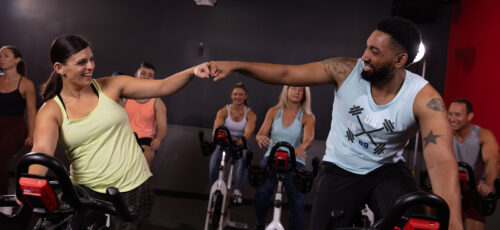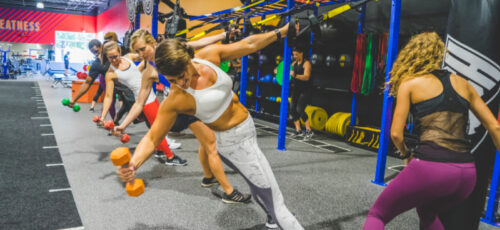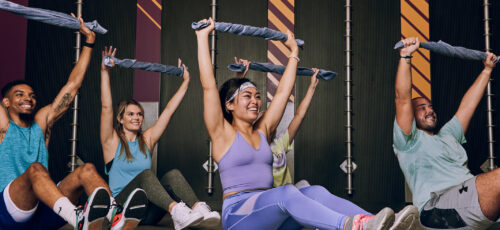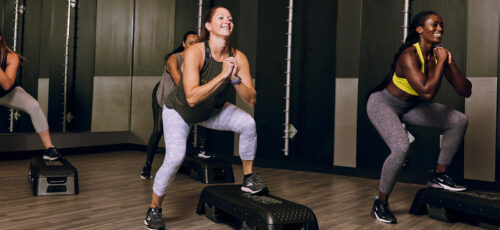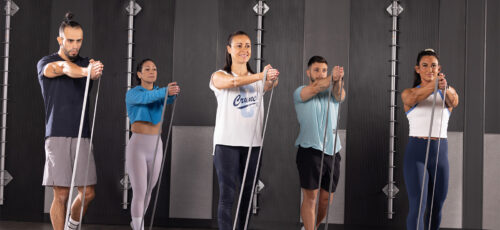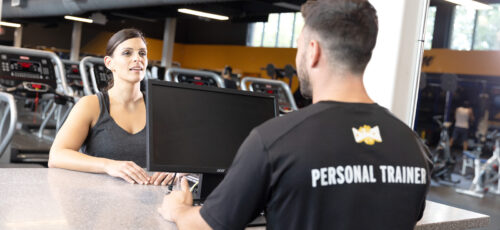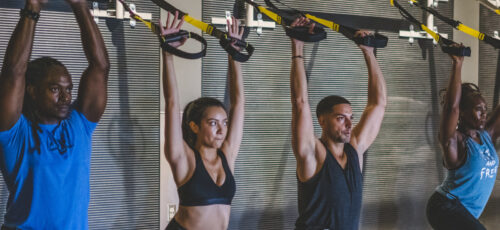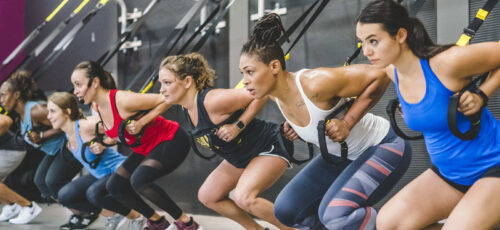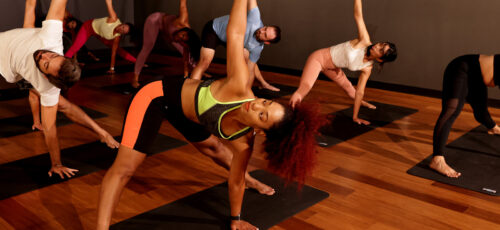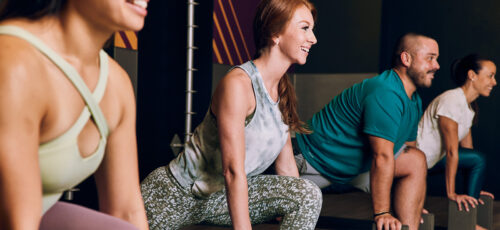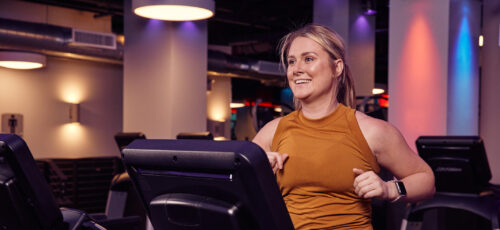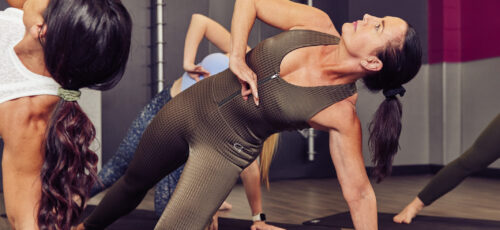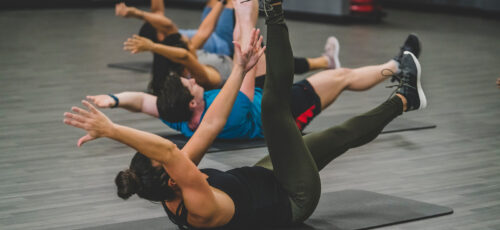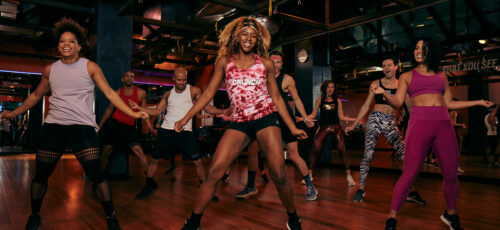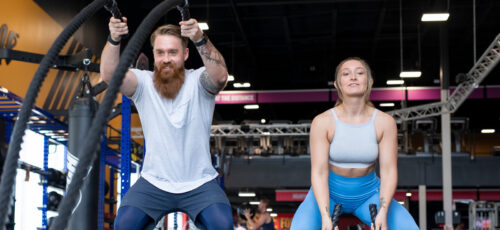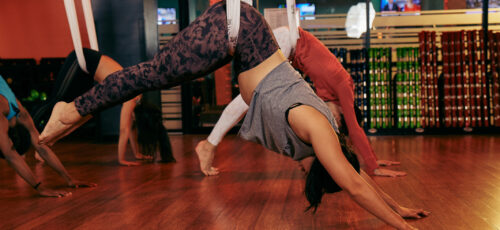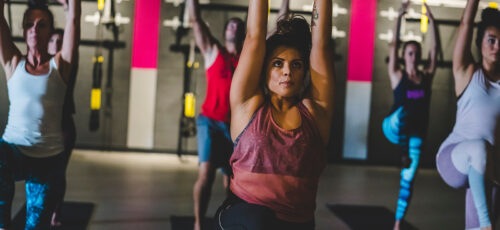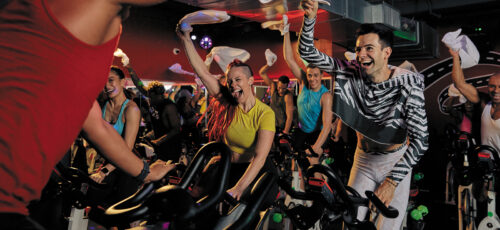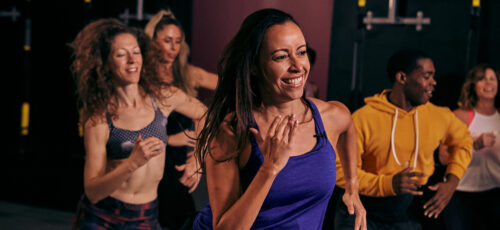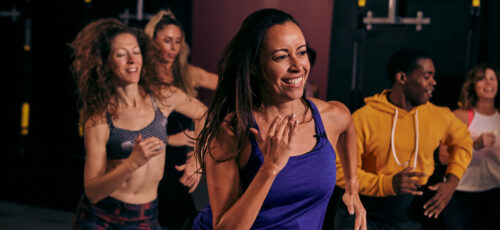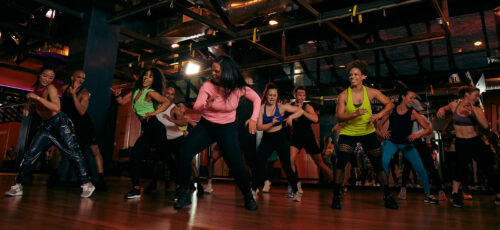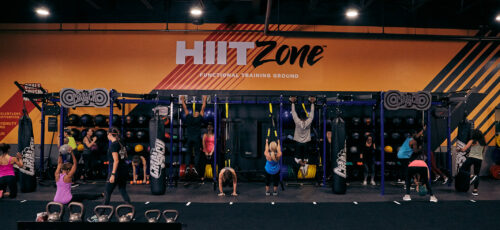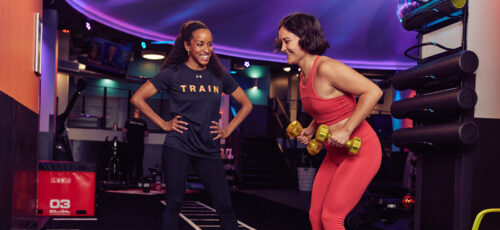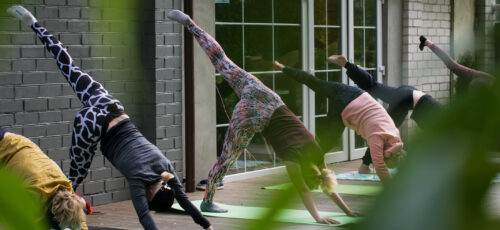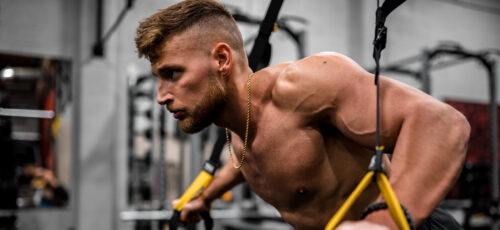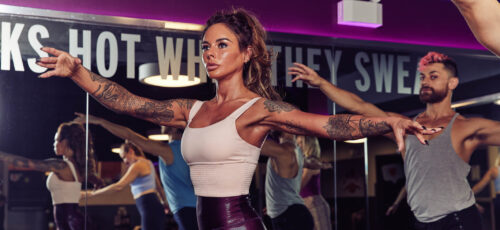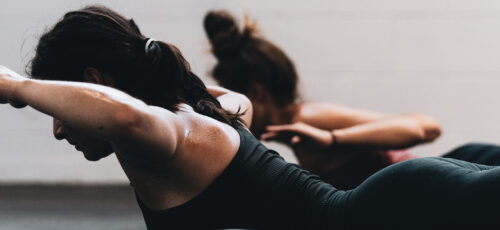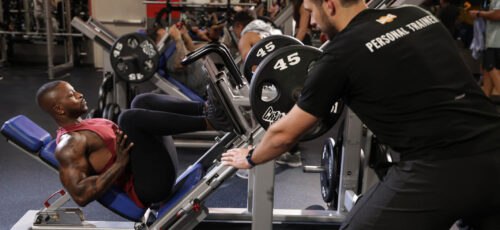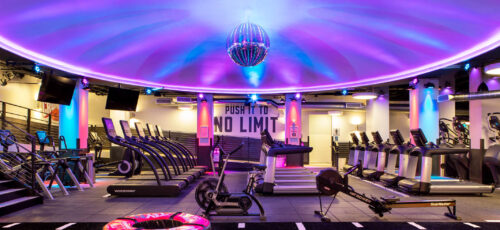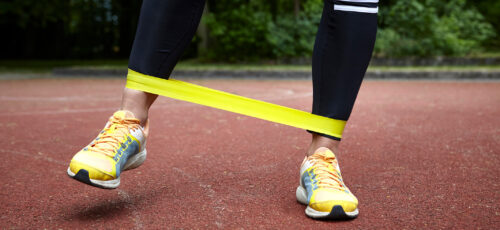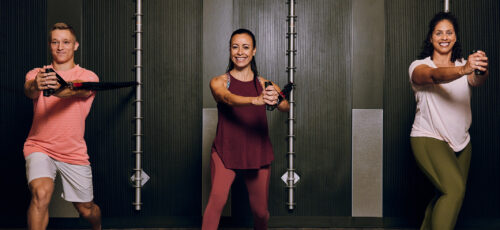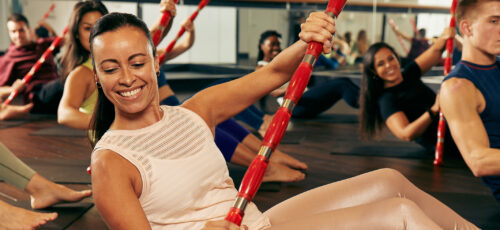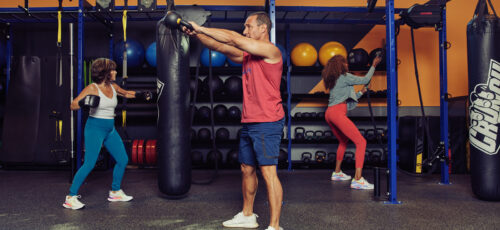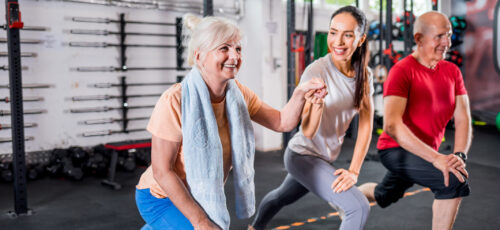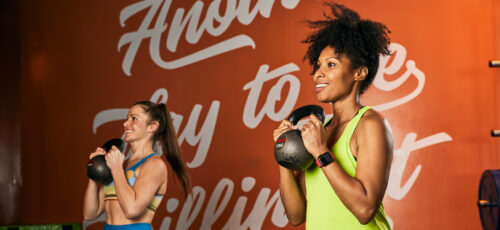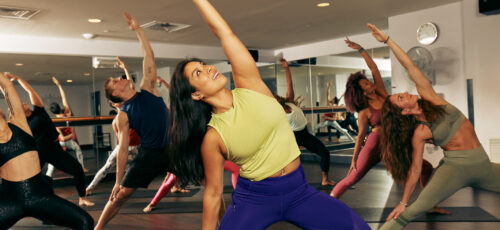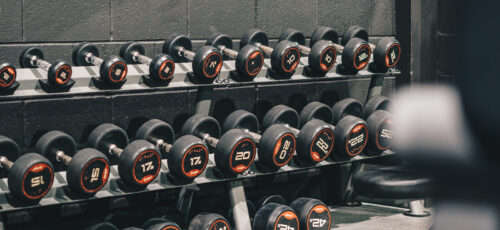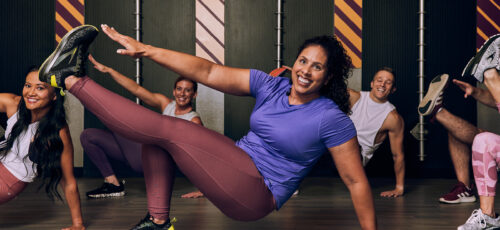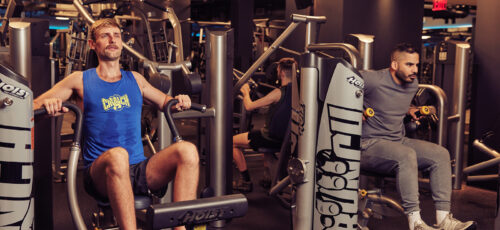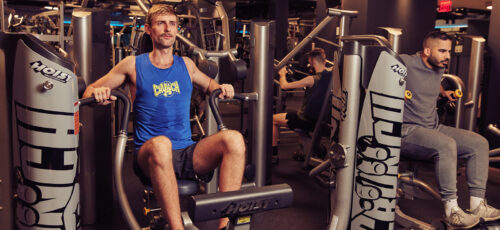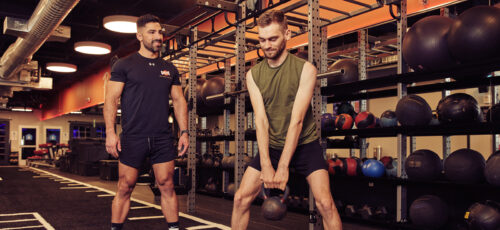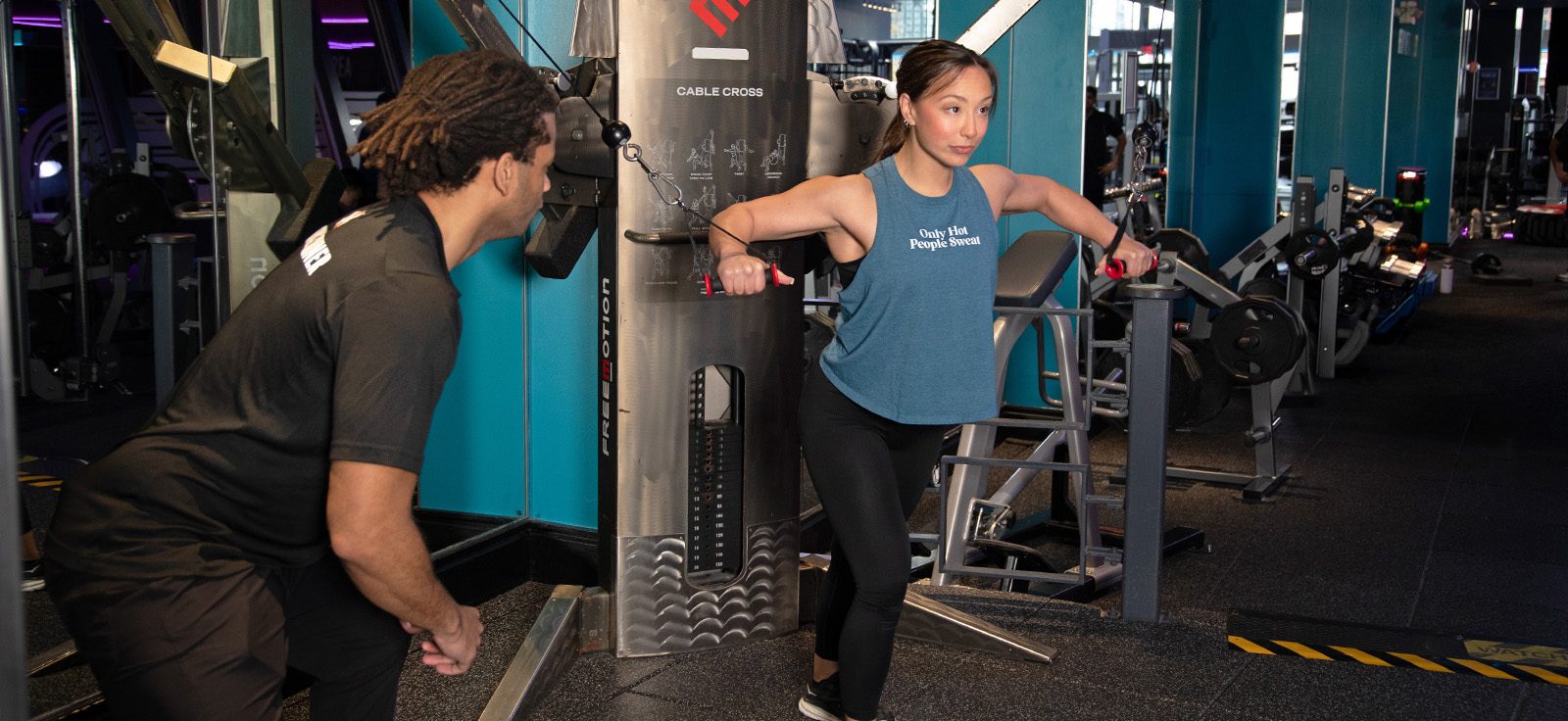
What Are the Most Effective Chest Strength Exercises for All Levels?
Do you think chest workouts are just about looking good in a tank top? Think again. Your chest muscles do more than turn heads; they help you push, lift, and move better in everyday life.
From opening heavy doors to crushing your next bench press, a strong chest means a stronger you.
Whether you’re new to strength training or already lifting free weights, mastering the right chest strength exercises can boost upper body power, improve shoulder stability, and even help prevent muscle loss over time.
The key is learning proper form: keeping your feet flat on the floor, standing shoulder-width apart, and taking time to lower each rep slowly.
In this article, Crunch Fitness will walk you through:
- 8 Best Chest Exercises for Strength and Function
- How Many Sets and Reps You Actually Need
- Tips for Better Definition and Balanced Growth
- How to Eat for Muscle Gain and Recovery
- How to Structure Chest Day Like a Pro Trainer
Ready to power up your next workout? Let’s flex that motivation and build strength that shows, inside and out.
8 Best Chest Exercises For Strength & Function

No matter if you prefer body weight exercises, free weights, or resistance bands, these eight chest strength exercises will help you create a strong, balanced, and sculpted upper body.
Each move below targets your pectorals, shoulders, and triceps, while improving stability through your core and shoulder blades.
Let’s dive in, and remember, form always beats ego!
1. Incline Push-Up
Equipment required: None
If the standard push-up feels tough or you’re just warming up, the incline push-up is your best starting position. It’s gentle on the joints, builds proper alignment, and activates your chest muscles without overloading them.
How to do it:
- Stand facing a wall, countertop, or sturdy bench.
- Place your hands flat and shoulder-width apart, then walk your feet back until your body forms a straight line from head to heels (roughly a 45-degree angle).
- Keep your spine neutral and shoulder blades pulled slightly together.
- Slowly bend your elbows, lowering your chest toward the surface.
- Pause, then press away until your arms are straight again.
Pro tip: Step closer to make it easier or farther away to make it harder. Try 2–3 sets of 15–20 reps. According to the Arthroscopy Association, dynamic warm-ups like this one help reduce injury risk and improve performance before heavier strength training.
2. Flat Bench Press
Equipment required: Barbell or dumbbells, flat bench
The flat bench press is the classic king of chest strength exercises, and for good reason. It develops serious upper body power and muscle mass while engaging the triceps, shoulders, and even your core.
How to do it:
- Lie on your back on a bench with your knees bent and feet flat on the floor.
- Grip the barbell slightly wider than shoulder width, palms facing your feet, thumbs wrapped around the bar.
- Lift the bar off the rack and move it so it’s directly above your chest level.
- Slowly lower the bar toward your chest, around nipple height, keeping your elbows at a 45° angle.
- Pause, then press back up to full extension.
Complete 3 sets of 8–12 reps. Keep your neck neutral and back flat on the bench to prevent strain. And yes, a spotter is your best friend here!
3. Incline Bench Press
Equipment required: Barbell or dumbbells, incline bench
Want upper-chest definition that pops? The incline bench press targets the clavicular head of your pecs, the area that gives your chest that full, lifted look.
How to do it:
- Lie on an incline bench (set at around 30–45°). Keep your knees bent and feet flat on the floor.
- Hold the barbell with your hands shoulder-width apart.
- Press the weight up until your arms are straight and it’s above your collarbone.
- Slowly lower the bar until it’s just above mid-chest level.
- Pause, then press back up to the starting position.
Do 3 sets of 8–12 reps. Maintain control, no bouncing off the chest, and keep your shoulder blades pressed into the bench.
4. Decline Bench Press
Equipment required: Barbell or dumbbells, decline bench
If the incline press is the mountain peak, the decline bench press is the foundation. It hits the lower part of your chest, giving your pecs complete symmetry and balance.
How to do it:
- Secure your legs under the ankle pads of a decline bench and lie back.
- Grip the bar with palms facing your feet and thumbs wrapped around it.
- Hold the bar directly above your lower chest or upper abdomen.
- Slowly bend your elbows and lower until the bar touches your chest.
- Pause, then press back up in a controlled movement.
Perform 3 sets of 8–12 reps. Keep your feet locked and your shoulders stable. A spotter is again recommended for safety.
5. Push-Up
Equipment required: None
The humble push-up is still one of the most effective strength training exercises ever invented. It trains your chest, arms, shoulders, and core, all with your own body weight.
How to do it:
- Start in a high plank position, hands slightly wider than shoulders, feet hip-width apart, and your body in a straight line.
- Engage your core, and slowly bend your elbows to lower your chest toward the floor.
- Keep your shoulder blades tucked in and your hips aligned.
- Press your hands flat into the ground to push back up to the top.
Try 3 sets of 8–12 reps. If it’s too hard, drop to your knees in a bent version. Want more challenge? Elevate your toes for decline push-ups or add a resistance band around your back.
6. Cable Crossover
Equipment required: Cable machine or resistance band
For sculpting that defined, inner-chest line, nothing beats the cable crossover. This move isolates your chest muscles and adds constant tension throughout the entire movement, something even bench presses can’t do.
How to do it:
- Stand tall between two high pulleys or use a resistance band anchored overhead.
- Step forward with one leg, keeping your feet shoulder-width apart and your core tight.
- Grab the handles and slowly pull them forward and down, crossing your hands at chest level.
- Squeeze your chest for a second, then slowly return to the starting position with control.
Perform 3 sets of 8–12 reps. Keep your arms slightly bent throughout; don’t turn it into a shoulder exercise.
7. Chest Dip
Equipment required: Dip station
Chest dips are a test of true upper body strength. They fire up your lower chest, triceps, and shoulders, while challenging your core stability.
How to do it:
- Grab the parallel bars with palms facing in and arms straight.
- Lean your chest slightly forward (this helps target your pecs over your triceps).
- Slowly bend your elbows to lower your body until your shoulders are just below your elbows.
- Pause, then press back up to the start position.
Go for 3 sets of 8–12 reps. If you’re new to dips, try using an assisted dip machine or a resistance band looped around your knees for extra support.
8. Resistance Band Pullover
Equipment required: Resistance band
Don’t underestimate the resistance band pullover; it’s a killer finisher that builds your chest while strengthening your lats, shoulders, and core. It also improves shoulder stability, which makes it a great move for older adults or anyone recovering from muscle loss.
How to do it:
- Anchor your band above head height. Lie on your back with your feet flat on the floor and your head toward the anchor point.
- Grab the band with your arms straight and palms facing away.
- Keeping your elbows straight, pull the band down toward your hips until it’s just above your thighs.
- Slowly return to the start position.
Do 3 sets of 8–12 reps. The key here is tension; don’t let the band snap back. Control every inch of the movement for the best results.
Read our article: What’s the Best Strength Training Gym?
How Many Sets and Reps Should I Do for Chest Exercises?
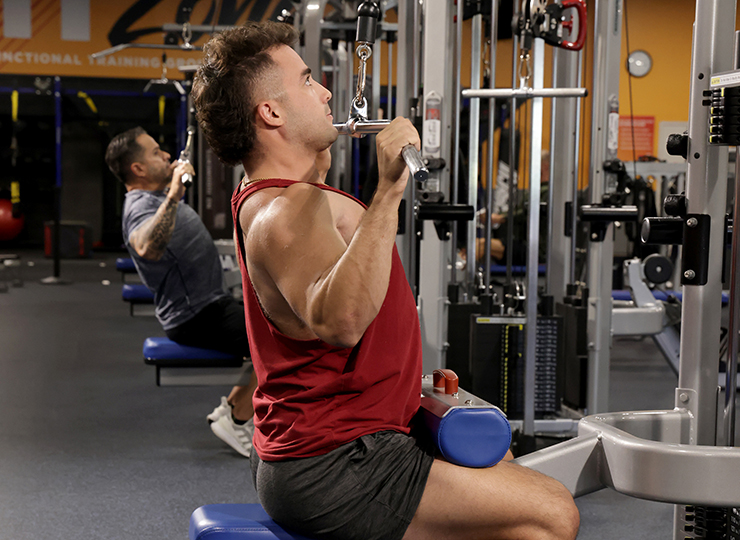
When it comes to chest exercises, your sets and reps depend on your goal; whether you’re aiming to build strength, size, or endurance. In strength training, quality beats quantity every time.
- To build strength: Go heavy and focus on control. Aim for 3–5 sets of 2–6 reps using challenging resistance, like a chest press or push-ups with added weight.
- To grow muscle (hypertrophy): Try 3–4 sets of 6–12 reps with moderate resistance. This is ideal for exercises like resistance band presses or dumbbell chest exercises.
- To boost endurance: Use lighter resistance for 2–4 sets of 12–20+ reps. This works great for body weight movements like push-ups or finishing sets that give your chest muscles that satisfying burn.
No matter your level, proper rest between sets and consistent strength training are key to long-term progress.
At Crunch Fitness, we understand that starting or enhancing your strength training journey can feel overwhelming, but we’re here to help make it simple, enjoyable, and effective for you.
Whether you’re just learning your first push-ups or striving to perfect your chest press form, our certified trainers are dedicated to supporting you every step of the way. Your goals are important to us, and we’re excited to guide you on this journey!
You’ll find everything you need to build strength and confidence:
- A full range of chest exercises, from body weight to resistance band and free weight training.
- Expert coaching on proper form, safe strength exercises, and progressive overload.
- Personalized workout plans designed around your goals, whether that’s muscle definition, endurance, or upper-body power.
- A motivating community that keeps you consistent and accountable.
Tips for Achieving Better-Defined Chest Muscles
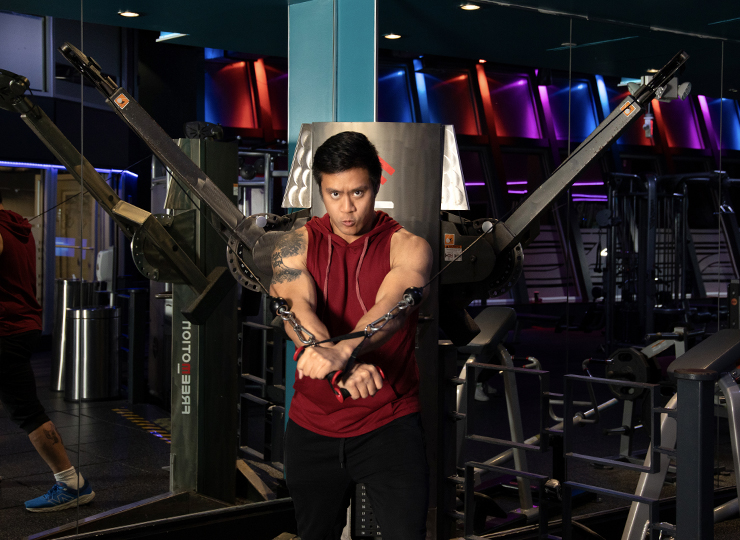
Getting well-defined chest muscles takes more than just countless push-ups; it’s about smart strength training, balanced nutrition, and recovery.
These tips will help you sculpt a stronger, more chiseled chest.
- Train from all angles. Combine flat, incline, and decline chest exercises to target every part of your pecs. Moves like chest presses, cable crossovers, and push-ups create symmetry and depth.
- Focus on form. Keep your shoulder blades pulled back, feet flat on the floor, and your spine neutral. Controlled reps beat heavy, sloppy lifting every time.
- Use progressive overload. Gradually increase your resistance or reps to challenge your muscles and build strength continuously.
- Don’t skip compound lifts. Exercises like bench presses and dips work multiple muscles, including your chest, shoulders, and triceps.
- Prioritize recovery. Muscles grow when you rest, so aim for at least 48 hours between chest sessions.
- Fuel your gains. A balanced diet rich in lean protein and complex carbs helps repair and define your chest.
What Should You Eat If Chest Definition Is My Goal?
If you’re dreaming of that sculpted chest that proudly says, “Yeah, I train,” you’re in luck! Your secret weapon for achieving that look isn’t just about doing push-ups or chest presses; it’s also found on your plate.
Protein is your best gym buddy here. It fuels muscle growth by kicking off something called muscle protein synthesis, basically, the process where your muscles repair and grow after a killer workout.
To make those chest muscles pop, balance your meals with lean proteins, whole grains, fruits, and veggies. Think chicken breast, fish, tofu, or eggs instead of processed stuff.
The American Dietetic Association suggests about 0.8 grams of protein per kilogram of body weight, but if you’re hitting strength training exercises, aim higher, around 1.6 to 2.2 grams per kilogram daily, spaced out every 3–5 hours.
For example, if you weigh 150 pounds (68 kg), you’ll want around 109–150 grams of protein per day. Combine good food, smart training, and enough rest, and you’ll be flexing that defined chest in no time, T-shirt optional.
Read our article: Intermittent Fasting and Strength Training – How to Do It Correctly
Maximum Results: How Should I Structure My Chest Exercises?
Building an impressive chest takes more than effort; it takes strategy. The way you structure your chest workout can make or break your progress. Here’s how to do it right:
- Start strong. Open your session with heavy compound lifts like the bench press, incline press, or chest dips. These moves recruit multiple chest muscles and maximize your overall strength training.
- Then go for precision. After the big lifts, focus on shaping and defining your pecs with accessory exercises; think cable crossovers, resistance band flyes, or body weight push-ups.
- Train smart and steady. Work your chest twice a week, giving your muscles time to recover and rebuild.
- Keep challenging yourself. Apply progressive overload by slowly increasing weight, reps, or intensity every week.
Stay consistent, fuel your body right, and you’ll be flexing that strong, sculpted chest with confidence in no time.
Reach Your Fitness Goals With Crunch
Crunch promotes a culture of positivity, inclusivity, and fun with no judgments by providing an environment for all individuals regardless of their health and fitness goals. Find a Crunch gym near you to try our free trial membership, or join Crunch now. We’re here for you – at the gym or at home. Access the best live & on-demand workouts anytime, anywhere with Crunch+. Ready to get sweaty? Try hundreds of workouts for free! Start your free trial now!
FAQ’s
What Are the Benefits of Training Your Chest Muscles?
Training your chest muscles does more than improve appearance; it boosts strength, posture, and performance. Strong pecs support pushing movements, stabilize the shoulder joints, and make everyday actions like lifting or carrying easier. A solid chest routine can also help with deeper breathing and overall upper-body balance.
What Are the Best Chest Exercises for Men?
The best chest exercises work for everyone. Men often focus on bench presses, push-ups, dips, and cable crossovers to build size and definition. The difference lies in intensity; men typically use heavier weights and lower reps (6–12) to increase muscle mass and strength.
What Are the Best Chest Exercises for Women?
Women benefit from the same chest workouts as men. Moves like push-ups, resistance band flyes, and chest presses help improve posture, upper-body tone, and strength. The goal isn’t bulk; it’s balance, confidence, and functional fitness.
Can I Build My Chest at Home?
Absolutely! You can build strength with body-weight moves like push-ups, plank-to-press, or resistance band chest exercises. Add dumbbells for presses or flyes, and use progressive overload by increasing reps, slowing tempo, or reducing rest to keep making gains.
Are Chest Workouts Just for Men?
Not at all! Chest exercises benefit everyone. Women can lift and tone the chest area, improve posture, and strengthen supporting muscles like the shoulders and triceps.











